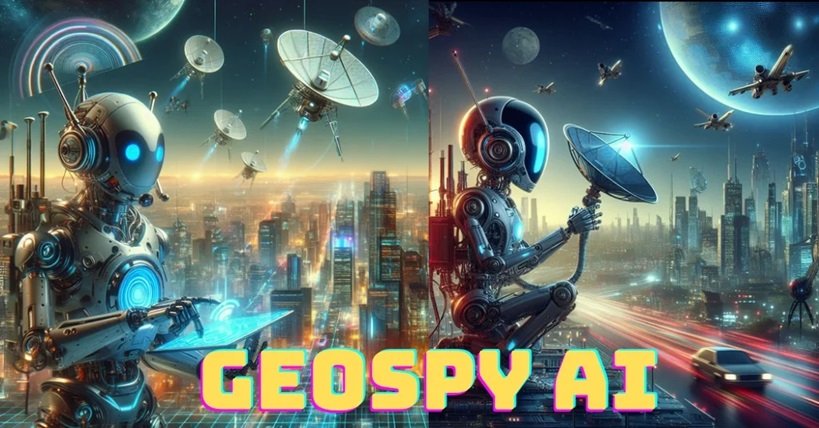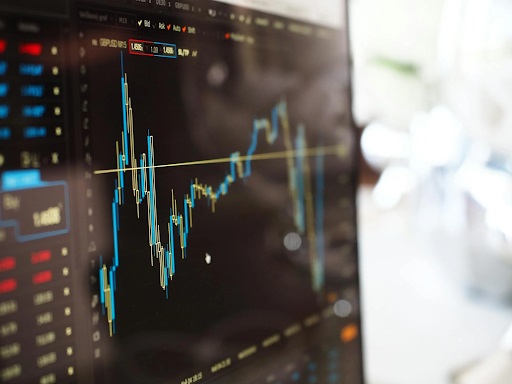In today’s increasingly interconnected world, geolocation and surveillance technologies are transforming how governments, businesses, and individuals monitor activities, ensure security, and optimize services. At the forefront of this revolution is GeoSpy AI, an advanced solution that merges artificial intelligence (AI) with geospatial data to create powerful tools for tracking, monitoring, and analyzing real-time data. But what exactly is GeoSpy AI, and how is it shaping the future of geolocation and surveillance?
In this article, we’ll explore the potential of GeoSpy AI, its key features, and how it’s paving the way for cutting-edge applications in various sectors.
What is GeoSpy AI?
GeoSpy AI is an innovative technology that combines geolocation tracking, AI-driven data analysis, and advanced surveillance systems to provide real-time monitoring and intelligence gathering. This powerful platform uses AI algorithms to process vast amounts of geospatial data, delivering insights into movement patterns, environmental changes, and human activities.
GeoSpy AI leverages tools like GPS, satellite imagery, and sensor networks to collect data from multiple sources. The AI component processes this data to predict behaviors, detect anomalies, and generate detailed maps and reports that are invaluable for industries ranging from security and law enforcement to logistics and urban planning.
Key Components of GeoSpy AI:
- Geospatial Data Processing: Analyzes location-based data from satellites, drones, and GPS systems.
- AI Algorithms: Machine learning models that interpret geolocation data and generate predictions.
- Surveillance Integration: Uses sensors, cameras, and satellite imagery to monitor environments in real time.
- Data Visualization: Presents data in easy-to-understand formats like maps, heatmaps, and dashboards.
How Does GeoSpy AI Work?
GeoSpy AI works by gathering geospatial data from various sources, including satellites, drones, GPS-enabled devices, and surveillance cameras. This data is fed into the AI system, which processes it using machine learning algorithms to detect patterns, predict movements, and identify potential risks or opportunities.
Here’s a breakdown of how GeoSpy AI functions:
1. Data Collection
GeoSpy AI collects data from:
- Satellites: Real-time imagery and location data.
- GPS Devices: Geolocation data from phones, vehicles, and IoT devices.
- Drones: Aerial surveillance and environmental monitoring.
- Surveillance Cameras and Sensors: Ground-level monitoring of activities and assets.
2. AI-Driven Analysis
The raw data collected is processed by AI algorithms that:
- Analyze movement patterns and trajectories.
- Identify anomalies or suspicious activities.
- Predict future behavior based on historical data.
This analysis provides actionable insights for decision-makers in fields like security, logistics, urban planning, and environmental monitoring.
3. Real-Time Alerts and Visualization
GeoSpy AI delivers real-time updates, generating heatmaps, interactive maps, and detailed reports that allow users to monitor activities as they happen. The system also sends alerts when it detects unusual patterns or events, enabling rapid response in critical situations.
Applications of GeoSpy AI in Various Sectors
The versatility of GeoSpy AI makes it a valuable tool across multiple industries, from enhancing national security to improving business operations. Here are some of the most impactful applications of this cutting-edge technology:
1. National Security and Law Enforcement
GeoSpy AI’s advanced surveillance capabilities make it an essential tool for national security and law enforcement agencies. By combining satellite imagery, geolocation data, and AI-powered analytics, the system enables governments to:
- Track the movement of individuals and vehicles of interest.
- Monitor borders and sensitive areas for unauthorized activities.
- Detect patterns of suspicious behavior or potential threats in real time.
- Facilitate crime prevention and counter-terrorism efforts through predictive modeling.
For example, GeoSpy AI can help detect unusual movement patterns near critical infrastructure, alerting authorities to potential security breaches or suspicious activities before they escalate into threats.
2. Logistics and Supply Chain Optimization
For businesses in the logistics and supply chain management sectors, GeoSpy AI offers game-changing benefits. By integrating AI with real-time GPS tracking, businesses can:
- Monitor the location of shipments and assets in real-time.
- Optimize delivery routes based on traffic patterns and environmental conditions.
- Predict delays or disruptions and re-route deliveries accordingly.
- Enhance overall fleet management by analyzing driver behavior and fuel efficiency.
With GeoSpy AI, companies can streamline operations, reduce costs, and ensure timely delivery of goods, leading to increased customer satisfaction and better resource management.
3. Environmental Monitoring and Disaster Response
GeoSpy AI plays a critical role in environmental monitoring and disaster response. By analyzing satellite data and real-time environmental sensors, the system can track changes in weather patterns, monitor deforestation, or detect natural disasters such as wildfires, floods, or hurricanes.
The ability to predict and detect environmental changes in real-time enables organizations and governments to:
- Respond quickly to natural disasters and deploy resources more efficiently.
- Monitor areas prone to environmental degradation, such as illegal logging or poaching.
- Support sustainability efforts by providing data on climate change and ecosystem health.
4. Smart Cities and Urban Planning
GeoSpy AI is revolutionizing urban planning by offering tools for smart city management. With real-time geolocation data, city planners can optimize traffic flows, monitor infrastructure, and design better public transportation systems. GeoSpy AI’s data can be used to:
- Monitor traffic patterns and reduce congestion in urban areas.
- Plan for infrastructure development based on population movement.
- Improve public safety by integrating surveillance data with law enforcement systems.
- Optimize energy use and resource distribution in sustainable cities.
5. Asset Tracking and Fleet Management
For industries relying on asset management and fleet tracking, GeoSpy AI offers significant advantages. Companies can monitor their assets in real-time, reduce theft or loss, and improve operational efficiency by using AI to analyze:
- Vehicle routes and driver behavior.
- Asset locations and conditions.
- Maintenance schedules and fuel consumption.
This not only enhances operational efficiency but also ensures that businesses maintain accountability over high-value assets.
Key Benefits of GeoSpy AI
1. Real-Time Surveillance and Monitoring
GeoSpy AI’s real-time surveillance capabilities provide users with immediate access to data and insights, allowing them to respond quickly to changes or threats. Whether tracking assets across continents or monitoring urban activities, GeoSpy AI ensures that decision-makers have up-to-date information at their fingertips.
2. Enhanced Security and Threat Detection
By leveraging advanced AI, GeoSpy AI can detect threats before they occur. The system’s ability to predict behaviors based on past data is particularly useful for national security and law enforcement, where early detection can prevent crimes or mitigate risks.
3. Improved Operational Efficiency
For businesses, GeoSpy AI optimizes operations by providing detailed insights into supply chain, fleet management, and asset tracking. The AI-driven analysis helps reduce costs, improve route planning, and boost overall efficiency.
4. Customizable Solutions for Different Sectors
One of the key strengths of GeoSpy AI is its versatility. The platform can be tailored to fit the specific needs of different industries, whether it’s surveillance for national security or environmental monitoring for conservation efforts.
5. Scalable Technology
GeoSpy AI is designed to scale according to the needs of its users. Whether it’s a small business or a large government agency, GeoSpyAI can handle increasing amounts of data and provide valuable insights without compromising performance.
Challenges and Ethical Considerations
While the technology behind GeoSpy AI offers tremendous advantages, it’s important to consider the ethical challenges associated with surveillance and geolocation technologies. Issues such as privacy, data security, and the potential misuse of surveillance data must be addressed to ensure that GeoSpyAI is used responsibly.
Governments and businesses adopting GeoSpy AI should establish strict data protection protocols and comply with relevant laws and regulations, such as GDPR (General Data Protection Regulation), to protect individual privacy and ensure ethical use of the technology.
The Future of GeoSpy AI
The future of GeoSpy AI is promising as advancements in AI and machine learning continue to improve the accuracy and capabilities of geolocation and surveillance systems. We can expect to see further integration of 5G technology, drone surveillance, and smart city infrastructure into platforms like GeoSpyAI, allowing for more seamless and sophisticated monitoring capabilities.
As the world becomes more interconnected and reliant on real-time data, GeoSpy-AI will play a crucial role in enhancing security, optimizing business operations, and ensuring the efficient management of resources in various sectors.
Conclusion
GeoSpyAI is a transformative technology that is shaping the future of geolocation and surveillance. By combining AI-powered data analysis with real-time tracking and monitoring, GeoSpyAI is enabling industries and governments to make more informed decisions, enhance security, and improve operational efficiency. As technology continues to evolve, GeoSpyAI will remain at the forefront of innovation, offering powerful solutions for a wide range of applications—from national security and environmental monitoring to logistics and smart city management.
Also, Read About, Revo Technologies Murray Utah.




